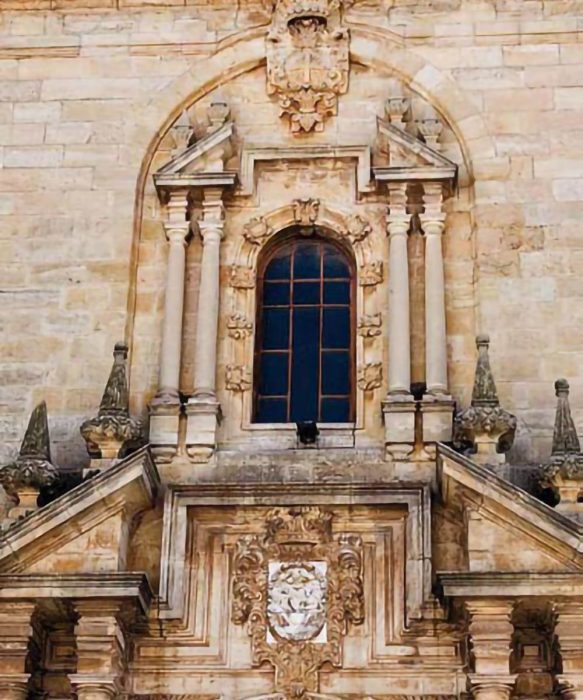The old hermitage of Cristo de las Penas or Peñas was located in the place. This Convent is dated 1663, when the community of Barefoot Trinitarians moved to it, leaving the old monastery on the Tagus cornice. One of the key characters in the construction of the building was the nobleman Juan Núñez Salcedo, who reserved for himself and his family the patronage of the Convent and Main Chapel, affected by the second Confiscation, the Barefoot remained until 1836, of which only the church remains , with a Latin cross plan inscribed in a rectangle, with three naves separated by square pillars that carry Corinthian pilasters attached.
It became an auxiliary temple of the parish of Santa Cecilia (today Father Jesús), until in 1875 it was converted into a parish with this name and its owner transferred there, due to its greater breadth and central location. At that time the site was already used as a School of Elementary and Higher Education and a College of Humanities
The square where it is located was remodeled at the end of the 19th century. Triangular in shape, with the smaller side closed by the side of the church of the former Convent of Los Descalzos and a garden in the center.
It has a sober and simple side façade, made of masonry and brick, with a stone portal with a semicircular arch and pilasters, on which a split pediment with a niche rests. In it, the two-section bell tower appears.
It has a central door of great beauty and artistic value. With a semicircular arch framed by Tuscan columns that support a split pediment topped by pyramids and balls. On the tympanum there is a medallion with the representation of the Holy Trinity and a sculptural group in which an angel was hoisting chains, flanked by two characters in a prayerful position, which recalls the miraculous vision that the founder of the Order of San Juan de la Bush. This angel, due to its deterioration, was replaced by a Latin stone cross in the mid-19th century. It has a second body with paired Tuscan columns, and a third, smaller body, finishes off the façade with a split curved pediment, with a balcony on the tympanum with the papal shield surmounted by a cross.
It was one of the churches that suffered the least deterioration during the civil war, as it was converted into a barracks by the Republican troops. It has two altarpieces: that of San Antonio, made of polychrome wood with 18th century mirrors, and that of the Trinity, in a neo-baroque style. The dome of the transept is decorated with wall paintings from the 18th century. And we must mention an oil on canvas that represents the “Death of San Francisco Javier” by Fernández de Salazar y Montiel, from the 18th century; and from the same century, the copy made by Rafael Borrajo of “La Virgen de la Faja”, original by Murillo.

